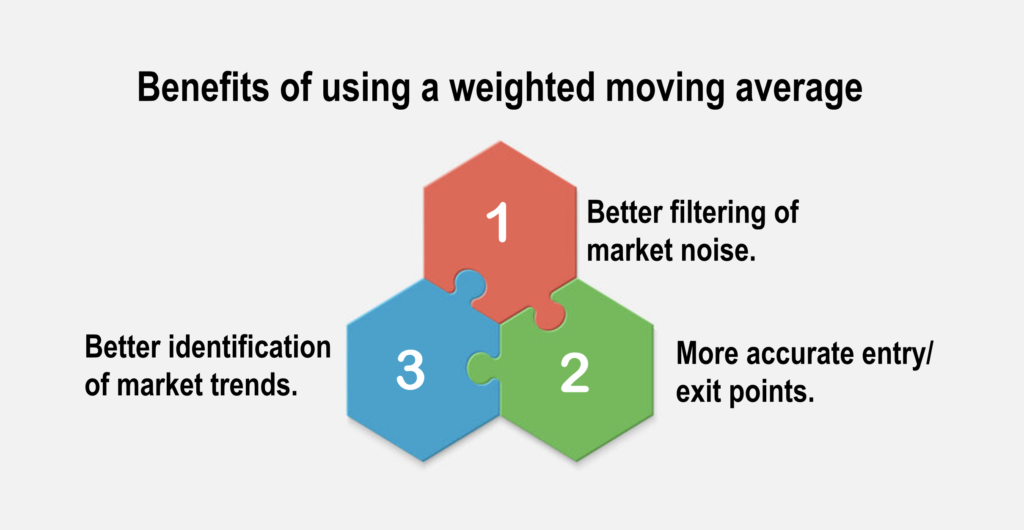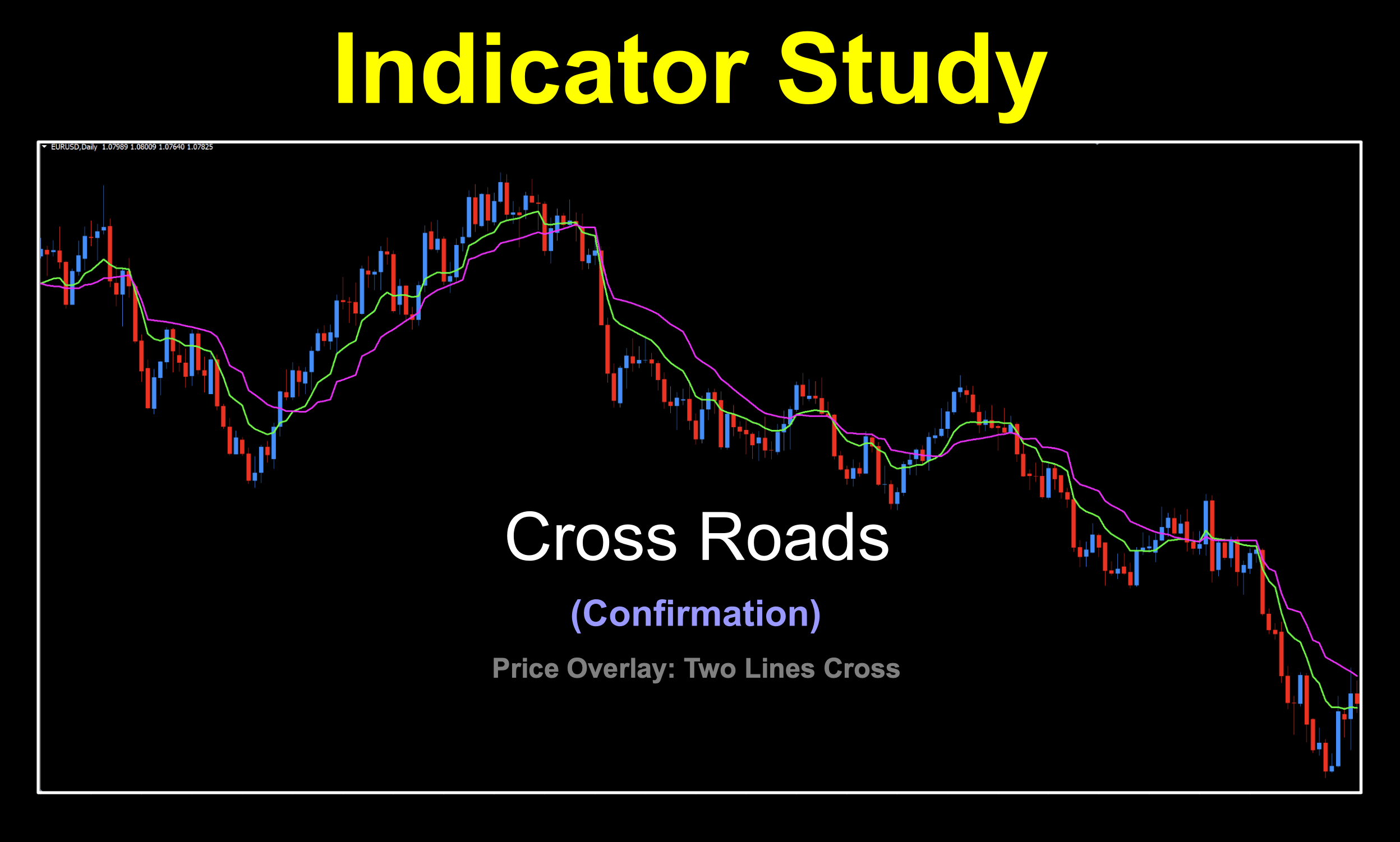Be sure to see the “NEWS FLASH” at the end of the blog…
Do the Thing
One of the nicer things in trading is finding indicators that do what they’re supposed to do. In this case, we decided to put one together based on other interesting indicators. What’s kind of cool is that original calculations can be extended upon by taking those concepts and moving them to a different level. In fact, many indicators do just that…kissing cousins…remember those?
Hard Work?
Working hard or working smart? It’s been an adage for as long as people have been employed. Trading back in the dark ages before computers was very tedious. Plotting charts by hand and manually calculating indicators, which were limited in their scope by how complicated each data point became. It was certainly a drag.

Below is the technical analysis video link…
Cross Roads as a Confirmation Indicator
Cross Roads, Not Country Roads
Through some lengthy discussion we worked through a few concepts where the central idea revolved around the use of a weighted moving average. We liked this specialized moving average because it assigns more weight to recent data points when calculating an average, making it more responsive to price changes than other types of moving averages.

But, Even More
We took it further by suggesting that if you had two of them and used the highest and lowest value in a special (filtered) WMA and inverse WMA variant to calculate the signal lines. We’ll pin an inception date of 2024 for this one, even though we chose to profile it in 2025.
Change of Hats
So, that being the case, Niels put on his super coding hat and got to work. What came from his efforts is an elegant price overlay, two lines cross that resembles a weighted moving average; however, it doesn’t take into account the latest specified number of period candles. Let’s take a look.
Beauty Queen

Pretty straight forward. We made the default colors bright and cheerful, as they work well on our darkened charts. However, you’re certainly able to change those colors depending on your personal preferences.
Settings
This indicator only has two settings, and we use both of them. There are a couple of “rules” you’ll need to be aware of, but we promise they’re simple to understand.

StartLen: The starting point where the math begins to gather data. The default value is 2.
LOOKBACK_period: This is the number of historical data periods the math will include when generating the signal lines. The default value is 24.
Obey Them Rules
There are two caveats we wanted to mention regarding the settings…specifically the one on top.
- The “StartLen” setting variable must not be less than zero.
- The “StartLen” setting must be less than the “LOOKBACK_period”.
If you ignore these rules, we cannot be held responsible for things like black holes or points of singularity forming in your charts.
Daily Maintenance
Remember, once you’re ready to perform daily maintenance on your trades during the last 20–30 minutes of the trading day (1700 New York time), you’ll be presented with one of four options.
- Opening a trade.
- Closing a trade
- Maintaining a trade; i.e.
- Moving a stop loss level.
- Exiting a trade.
- Taking a pass (nothing to do).
Long: When the green signal line crosses above the magenta signal line.
Short: When the red signal line crosses above the green signal line.
Crossing Paths
Now we come to the fun part to see how the signal lines work. Since they’re right on top of price, it’s visually pleasing and easy to use.

I think the first thing that stands out is that we don’t get as many signals when price flattens out. This is a good thing, and can be attributed to the data calculation methodology; i.e., more current is more relevant. The exits seem to be pretty good as well. Maybe we’re on to something…
Indicator Testing: A New Look — Please Read
(This will be the last time posting the “long” version)
After receiving worldwide correspondence over the years and careful consideration, VP, and we here at Stonehill Forex decided to change our testing protocol. Please read through the information below so you know how we will be testing from this point forward.
-
- Testing Time Frame: Daily.
- Testing span: Three (3) years.
- Price data: OPEN of period.
- Results: NNFX trade methodology (not the “quick” indicator testing methodology originally described in VP’s podcast from 2018).
- Based on the following criteria for all tested pairs:
- Beginning account balance — $100,000.
- Price data is from a live account.
- Risk profile — 2%.
- Leverage: 20:1.
- Two “half” trades per signal.
- Stop Loss/Take Profit levels are per NNFX:
- EUR/USD: SL = ATR x 1.50
- BTC/USD: SL = ATR x 1.25
- XAU/USD: SL = ATR x 1.25
- SPX500: SL = ATR x 1.50
- Continuation trades: Not included.
- Reported metrics:
- Signals: Total (long/short).
- Win/Loss %: Excluding “chalk” trades.***
- ROI%: Per NNFX.
- Benchmark results: Default settings.
- Basic tweaks will suggest results, which try to avoid “curve fitting” or “over fitting”. You can read more about this in the Leman Trend indicator blog HERE.
*** Chalk trades are those trades where an exit (opposite signal) was given prior to price reaching either the take profit or stop loss level.
Lift Off
Below are the results from our updated testing.




It Happens
Looking over the results, they’re not too bad. What we first noticed is that not only are all the default numbers positive (which is awesome), the default settings for the daily BTC are actually the best of all those we tried using the strategy tester.
Talking Point
This actually brought up a discussion point mentioned long ago concerning “default settings”. The premise was that coders designed an indicator with values to perform the best on their default settings. This, as we know, is not the case. Perhaps at that particular moment in time, on a specific pair, using a particular chart time frame it worked. But, do you really think it’s going to work on all pairs, all time frames, all time spans, and in all market conditions? Not hardly. We just happen to be fortunate here and naturally, we’ll take it!
Resources
This creation is available to you for free and can be gotten from the Stonehill Forex library. A “NEW ” notation will be next to the name to help you find it. Give it a go by getting it, HERE. Also, be sure to subscribe to the Stonehill Forex YouTube channel for the technical analysis videos. Sign up for the Advanced NNFX Course HERE.
Our only goal is to make you a better trader.
NEWS FLASH
You asked, we responded. After the overwhelming success of our homegrown indicator “Cross Roads” and the innumerable requests for other platform versions, we completed the conversion of the indicator into MT5 and TradingView. Both are now available and can be accessed from our on-line library, or from the MLQ5 marketplace and directly on TradingView. Be sure you’re subscribed to the YouTube channel “Stonehill Forex” and request to be part of our broadcast list via email “dan@stonehillforex.com”.
*Our published testing results are based on money management strategies employed by the NNFX system and depend on varying external factors, which may be different between individuals and their specific broker conditions. No guarantee, trading recommendations, or other market suggestions are implied. Your results and subsequent trading activities are solely your own responsibility.
BTW — Any information communicated by Stonehill Forex Limited is solely for educational purposes. The information contained within the courses and on the website neither constitutes investment advice nor a general recommendation on investments. It is not intended to be and should not be interpreted as investment advice or a general recommendation on investment. Any person who places trades, orders or makes other types of trades and investments etc. is responsible for their own investment decisions and does so at their own risk. It is recommended that any person taking investment decisions consults with an independent financial advisor. Stonehill Forex Limited training courses and blogs are for educational purposes only, not a financial advisory service, and does not give financial advice or make general recommendations on investment.

